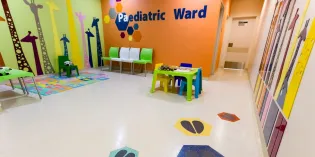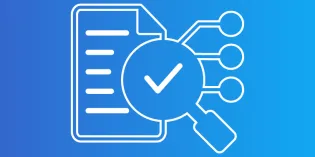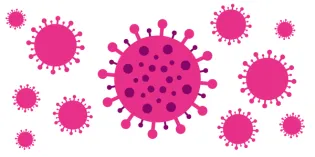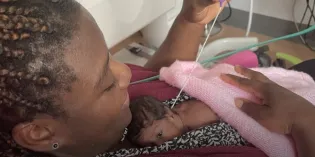This document was updated with new guidance following the third wave in early 2021. Whilst in the first and second wave not many children became unwell from COVID-19, Omicron is much more transmissible than previous COVID-19 variants resulting in a higher rate across the community. It is, therefore, to be expected that there will be more children and young people testing positive for COVID-19. However, paediatricians are not reporting Omicron to be a more serious or severe disease in children and young people in the UK with very few hospital admissions requiring paediatric intensive care. We also know there are many unintended consequences for children that have far reaching consequences.
Many services are still working very differently, and we want to provide advice to support you. It is vital that we protect our services, the wellbeing of staff, and ultimately child health outcomes.
- Introduction
- New COVID-19 Testing Regulations
- Rotas
- Rest
- Returning to clinical work
- Assessing competency to work at a higher level
- Staff at higher risk
- Working in systems and local planning
- Small, remote and rural services
- Clinical negligence indemnity
- Death in service/ill health retirement
- Staff wellbeing
- Winter pressures
- Best practice and innovative models
- Resources
Introduction
Staffing is a huge challenge and we hope this guidance helps support you in your decision making.
Key principles are:
- This is a marathon not a sprint. We need to do our best to try to sustainably support all grades and forms of staff, in order that they can provide appropriate services for CYP. These are trying times, and we recognise our workforce will go above and beyond.
- Flexibility and adaptability will be needed as the situation evolves.
- Put your own oxygen mask on first. The service needs healthy staff who are not burned out. Look after yourself and your colleagues.
The healthcare workforce continues to be fundamental to the NHS’s response to the ongoing challenges. We have seen much disruption to paediatric services through loss of inpatient capacity and differences in the availability or role of staff (due to redeployment, illness, shielding, etc) with some suggestion that children have generally been worst hit by the backlog. However, while some community services were stood down at the beginning of 2022, it is likely that in part due to the ‘Recovery Agenda’ services and the predicted increase in child respiratory illness over winter that services will be ramped up. Redeployment of child health staff to other areas of care and loss of paediatric clinical space must be kept to an absolute minimum, and considered only as a last resort, to avoid detrimental impact to children and young people. Child health services must be supported so that they can be resilient during winter when activity increases.
Maintaining paediatric and neonatal rotas in as many hospitals as possible remain essential. We must also link up across all services used by children and young people to ensure there are no unintended consequences for those who are not being seen as they usually would. Trust and Health Board senior management need to be engaged in system wide thinking to maintain as much of the paediatric services on as many sites as safely as possible, tailored to the local outbreak, geography and pressure in other sectors.
During the first wave of the pandemic, there was less routine care provided and fewer children accessing urgent care. This meant that some paediatricians were redeployed. For the second and third waves there is an expectation that routine care will continue as well as managing waiting lists. NHSE are also focusing on maintaining Special educational needs and disability (SEND) services and working with CCG’s to minimise disruption in care from allied health professionals to vulnerable children. Wales have similarly issued guidance pertaining to vulnerable CYP and mental health, as have Health Scotland and the NI Commissioner for Children and Young People. It is important to creatively consider skill acquisition when working in other areas and for the third wave maintaining paediatric services is of paramount importance.
However, whilst safeguarding the care of children and young people is our primary responsibility as paediatricians, we also have a responsibility to the wider profession in times of a pandemic. We need to continue to be ready to help our colleagues in adult medical care, critical care and the emergency department but in balance with our paediatric responsibilities. The four UK chief medical officers, the national medical director, the Academy of Medical Royal Colleges and the GMC wrote to all UK doctors (PDF) stressing that it will be appropriate and necessary for clinicians to work beyond their usual disciplinary boundaries and specialisms under these difficult circumstances, and they will support individuals who do so. Equivalent considerations apply for nurses, advanced health practitioners (AHPs) and other registered health professionals.
The BMA has released guidelines to minimise pressures on NHS staff and services during the winter.
The impact of COVID-19 on people’s mental health will endure beyond the pandemic. Supporting staff wellbeing is vital and it is important to consider the safety of staff both with relation to protection from COVID-19 and in managing risk with a reduced workforce.
New COVID-19 Testing Regulations
England
New guidance has been issued, which will continue to be reviewed.
From 24 February 2022, there is no legal requirement to self-isolate following a positive test; routine contact tracing has ended with no requirement for fully vaccinated close contacts and those under 18 to test daily for seven days or for close contacts who are not fully vaccinated to self-isolate. As of 1 April 2022, the government are encouraging people with COVID-19 symptoms to exercise personal responsibility.
From 1 April, in line with UKHSA advice, NHS staff testing will operate as follows:
- NHS patient facing staff should continue to test twice weekly when asymptomatic.
- LAMP testing will no longer be available after 31 March.
- LFD tests will continue to be available through the gov.uk portal for NHS staff working in a patient-facing role.
- NHS England is working with UKHSA to determine how routine asymptomatic testing should be stepped down in line with any decrease in prevalence rates.
- Symptomatic NHS staff should test themselves using LFDs
- Staff who test positive should continue to follow the current return to work guidance.
- Staff who are household contacts of a positive COVID-19 case will now be able to continue to work as normal if they remain asymptomatic and continue to test twice weekly. They will no longer be required to have a PCR test in order to return to work.
- Staff undertaking COVID-19 tests as part of a research study (eg SIREN) should follow the protocols of their study
- Staff should undertake COVID-19 tests on an ad hoc basis if instructed by their employer or director of public health in specific circumstances. Staff will be notified via their line management structure if this applies to them
Staff members with symptoms of a respiratory infection including COVID-19
- Anyone who has symptoms of a respiratory infection and has a high temperature or does not feel well enough to go to work, is advised to stay at home and avoid contact with other people. Guidance for people with symptoms of a respiratory infection including COVID-19.
- Patient-facing healthcare staff who have symptoms of a respiratory infection, and who have a high temperature or do not feel well enough to attend work, should take an LFD test as soon as they feel unwell. If the result of this LFD test is positive, staff should follow the advice in the section for staff members who receive a positive LFD test result for COVID-19. If the LFD test result is negative, they can attend work if they are clinically well enough to do so and they do not have a high temperature.
- If the staff member works with patients whose immune system means that they are at higher risk of serious illness despite vaccination, they should discuss this with their line manager who should undertake a risk assessment.
- If they are still displaying respiratory symptoms when they return to work, they should also speak to their line manager who should undertake a risk assessment.
- All patient-facing healthcare staff should resume routine asymptomatic LFD testing when they return to work, taking the first of these tests 48 hours after the LFD test that was taken when they developed symptoms.
- On returning to work, the staff member must continue to comply rigorously with all relevant infection control precautions and personal protective equipment (PPE) must be worn properly throughout the day.
Staff members who receive a positive LFD test result for COVID-19
- All healthcare staff who have received a positive COVID-19 test result, regardless of whether they have symptoms, are advised not to attend work for 5 days. They should follow guidance for people with a positive COVID-19 test result
- Patient-facing healthcare staff can return to work when they have had 2 consecutive negative LFD test results (taken at least 24 hours apart).
- The first LFD test should only be taken 5 days after the day their symptoms started (or the day their first positive test was taken if they did not have symptoms); this is described as day 0.
- If both LFD tests results are negative, they may return to work immediately after the second negative LFD test result, provided they meet the criteria below:
- The staff member feels well enough to work, and they do not have a high temperature
- If the staff member works with patients whose immune system means that they are at higher risk of serious illness despite vaccination, a risk assessment should be undertaken, and consideration should be given to redeployment until 10 days after their symptoms started (or the day their first positive test was taken if they did not have symptoms)
- The staff member must continue to comply rigorously with all relevant infection control precautions and personal protective equipment (PPE) must be worn properly throughout the day
- The staff member should resume twice-weekly asymptomatic LFD testing when returning to work.
- Click here for further information
Staff members who are contacts of a confirmed case of COVID-19
- Patient-facing healthcare staff who are identified as a close contact should continue with twice-weekly asymptomatic LFD testing.
- Staff who are identified as a household or overnight contact of someone who has had a positive COVID-19 test result should discuss ways to minimise risk of onwards transmission with their line manager.
- Click here to view considerations
For COVID-19 guidance for those whose immune system means they are at higher risk, click here.
Wales
A number of changes to Test, Trace, Protect have now come into force in Wales which includes:
- Closure of all PCR testing sites in Wales
- Free lateral flow tests to support regular asymptomatic testing in workplaces will end on Thursday (31 March) except for health and social care workers.
- Routine asymptomatic testing in childcare and education settings, except special education provision, will stop at the end of the term (8 April)
Staff who have symptoms
- Staff who have symptoms of COVID-19 should self-isolate immediately, notify their employer and book a PCR test through their employers agreed processes as soon as possible.
- Staff members should remain away from work until the result is known. If a negative result is received staff may return to work when they feel well enough to return.
- All staff should start their regular asymptomatic testing again and use lateral flow tests (LFT) twice a week.
Regular asymptomatic staff testing
- It is strongly recommended that all public-facing health and social care staff should do a LFT twice a week (contact employer to order LFTs)
- Where possible staff should test themselves at home in good time before a shift, so that cover can be arranged if the test is positive. Vaccination or previous infection with COVID-19 does not exempt staff members from using LFTs.
Staff who have tested positive (LFT or PCR) (with/without symptoms)
- Self-isolate immediately / continue to self-isolate if you had symptoms.
- Report your result online (gov.uk)
- Notify manager and engage with the contact tracing process which will include completion of eforms and, as health and social care professionals, potential follow up telephone calls with a contact tracer.
- Take LFT on day 5 and 6 of the self-isolation period.
- When you have two consecutive negative lateral flow tests 24 hours apart you can return to work.
- If you test positive on either day 5 or 6, you should continue to remain away from work until you have 2 negative tests taken 24 hours apart or up until day 10. You are also strongly advised to isolate from others (self-isolate) whilst you continue to test positive.
- The likelihood of a positive LFT in the absence of symptoms after 10 days is very low. However If your LFT result is positive on the 10th day, you should continue to test and only return to work when a single negative LFT is achieved.
- All staff should resume the twice weekly testing regime when they have returned to work.
Staff who are contacts of someone with COVID-19
- Staff should follow this guidance if they have been identified as a close contact of someone who has tested positive for COVID-19.
Northern Ireland
Asymptomatic Testing
- All Healthcare workers (including students on placement; contracted or temporary workers) are being offered lateral flow antigen testing; information on how to use these tests is available at: www.pha.site/LFDtest (when using packs of 25 tests)
- Tests are voluntary, but staff should be encouraged to be involved in twice-weekly regular testing to benefit their colleagues and patients even if they have received the vaccine
- These lateral flow antigen tests are solely for asymptomatic testing. If a member of staff has symptoms, they should access PCR tests in the normal way.
- Staff are asked to record all LFT results using the NHS Digital online platform www.gov.uk/report-covid19-result
Staff who have tested positive (refer to guidance)
- Staff should inform their manager of a positive result in the normal way. The staff member should report their result on the NHS Digital online platform. Staff can access the NHS Digital platform on www.gov.uk/report-covid19-result
- The staff member and their household should self-isolate as set out in government guidance: Coronavirus (COVID-19): self-isolating | nidirect
Staff who have COVID-19 symptoms
- Book a PCR test either via local Trust testing arrangements or the National Testing Programme. The staff member and their household should follow government guidance on self-isolation: Coronavirus (COVID-19): self-isolating | nidirect
Scotland
- All healthcare workers should continue to test twice weekly using a lateral flow device (LFD).
- Weekly asymptomatic PCR testing pathway has now ceased and has been replaced by twice weekly LFD testing.
- Weekly PCR testing in place for healthcare workers in the following specialties/wards oncology and haemo-oncology in wards and day patient areas including radiotherapy; in wards caring for people over 65 where the length of stay is over 3 month and in wards within mental health services where the anticipated length of stay is over 3 months was terminated in April 2022.
Rotas
Rota gaps due to isolation periods (especially for those with school-aged children) has presented a challenge for workforce and will likely continue to do so until government review of measures. As availability of staff increases and we return to ‘the new normal’, departments should seek to return to patterns of staffing which are similar to those pre-COVID. The following are points to consider should you have to amend your rotas during the third local/national peak:
- If the activity is reduced consider reducing the number of staff per shift but having more senior availability in the hospital to support decision making.
- For example, move from a three tier on-call to a two tier on-call rota with resident consultants. This will also enable some individuals to rest, or free up some of the workforce to support other services.
- If the activity is reduced consider making the shifts longer but having more time between shifts.
- Maximum shift length should remain less than 13 hours at present.
- Can you align your shift pattern with other services within your organisation? Shift length of 9 hours three times per day may be appropriate.
- A shift pattern could be adopted which is more similar to nursing staff, where all shifts are either long days (eg 08:30 - 21:00) or nights (20:30 - 09:00), allowing time for handover in between.
- If activity is high then reducing shift length may be important as intensity of shift work is equally important in burnout.
- Consider the area of practice as it may well be that longer shift in high risk areas increase the risk of acquiring coronavirus:
- High risk: ED, PICU and respiratory
- Lower risk: general paediatrics and neonates
- Consider a rolling model with 3 days on and 2 or 3 days off.
- Consider rostering people in teams with different skill levels.
- For example, a “blue team” may consist of one full time ST3 and two less than full time ST7s (who job share/divide their shifts)
- Follow the minimum requirements of safe staffing for your hospital and roster that many individuals to work, other staff may be rested or redeployed.
- Weekend and weekdays may need to be scheduled with the same amount of staffing.
- Engage and consult local staff when revising the rotas.
- Work with trainees to identify which days they can or cannot work due to caring responsibilities.
- Postgraduate doctors in training (PGDiT) rota changes must be done in conjunction with Medical Staffing and the Guardian of Safe Working
- Set a date for the new rota to be introduced, but also keep staff aware that the situation is evolving and may change.
- Rotas should comply with the conditions of the updated Junior Doctor Contract (2019). There are variations in each of the devolved nations, outlined here by the BMA
- Where rotas are non-compliant, this must be transparently communicated and recorded.
- Co-designing PGDiT rotas with trainees will mitigate this to some extent.
- See the NHS Employers and BMA guidance on the application of contractual protections during the pandemic. The guidance summarises some initial flexibilities and examples of acceptable steps while maintaining much of the intended safeguards.
- All staff should ensure that they keep track of additional hours worked to ensure appropriate remuneration.
- The BMA have issued guidance regarding PA allocation for out of hours and additional work during the pandemic.
- Ensure you have up to date contact details for staff and plans for arranging cover in emergency situations.
- WhatsApp or other messaging groups may be helpful for this.
- You may need to pool all specialist patients into one general service, especially as some sub-specialties will have very limited outpatient activity and so more capacity for inpatient work.
- HEE and HEIW have issued guidance on managing the training workforce which is applicable to students and trainees. They have committed not to redeploy students from their scheduled placements in order to avoid any further disruption to education. Postgraduate deans will work with local systems regarding redeployment during surges and the potential impact on training. Redeployment should be a last resort for trainees, particularly those that are already behind, and if necessary, for a limited time. Currently, in Northern Ireland no paediatric trainees are being redeployed with minimal impact on training and educational activities. With proper measures, students may be able to support service delivery and continuity during a COVID-19 resurge. There are also support services to provide advice for trainees; including the Professional Support Unit in Wales and the Scotland Deanery.
- BMA guidance advises that those who are redeployed or re-entering the workforce should expect to receive a full induction program that includes shift patterns, timing, self-isolation rules, PPE, supervision and any necessary clinical or non-clinical training. Redeployment should be for two weeks minimum, but can be up to four to six weeks.
- Community paediatricians should not be transferred to acute services unless absolutely necessary. There will likely be an increase in demand.
- Redeployment of specialist children's nurses is having a knock-on effect on neonatal units and children's services, and they need to be brought back to their respective units
Rest
-
Employers are encouraged to adopt the BMA Fatigue and Facilities Charter which caters for physical needs of staff
-
Allocate sufficient rest breaks and time off between shifts with access to safe changing and rest area, food and water
-
Identify hospital accommodation where staff can rest in if they cannot easily get home safely.
- Can rooms be converted into rest areas?
- NHS-reimbursed hotel accommodation has been agreed centrally.
- Ask your hospital to liaise with local hotels to support this.
- Signpost trainees towards NHS-reimbursed hotel accommodation (which has been agreed centrally).
- If this is not already in place, ask your hospital to liaise with local hotels to support this. The offer of accommodation is optional for staff who are:
- Self-isolating from their household and wish to remain working
- Too tired to travel home and needing to do frequent shifts
- If this is not already in place, ask your hospital to liaise with local hotels to support this. The offer of accommodation is optional for staff who are:
- Each room should have access to separate toilet/washroom facilities in case the staff member is required to self-isolate from others.
- Allow staff to take allocated leave, ensuring sufficient cover.
Returning to clinical work
Staff have returned after long periods of absence due to either having COVID or from different ways of working and are concerned over new disruptions to work, education and training:
- Ensure risk assessments take place when trainees or other staff are returning to work.
- Many people shielding have concerns over recommencing face to face activity and this needs to be acknowledged with recognition that support may need to be put in place.
- Ensure relevant induction, including training in personal protective equipment (PPE).
- Returning trainees should spend two weeks working shifts where there is appropriate supervision from someone working at consultant level.
- For trainees in England, signpost to local Supported Return to Training resources
- Ensure staff have received simulation training and Basic Life Support/Advanced Paediatric Life Support/Neonatal Life Support as relevant. Electronic resources to support this are provided at the bottom of the page.
- Ensure up to date information on child protection is provided.
- Consider impact of Long COVID on staff health, wellbeing, and resilience.
- For those with Long COVID, on return to work (and ongoing) ensure supportive conversation about concerns.
- Support the use of occupational health review and/or access to Long COVID services if appropriate and ensure a strategy is in place for managing symptoms in staff returning to work while recovering from Long COVID.
- Monitor any changes in vaccination and isolation strategies that may impact staff and patients including potential mandatory vaccinations for the healthcare workforce, plans for which have recently been put on hold.
Returning to clinical work after retirement (retire and return)
- The GMC has provided temporary registration to our recently retired colleagues.
- However, be aware that these individuals have contributed significantly over the years, and they may be in vulnerable groups, and so consider carefully if and what we ask them to do.
Assessing competency to work at a higher level
Consider the core skills that are available within your department or service and whether people can work at a higher level. It is important to ensure these individuals are appropriately supported and inducted.
Moving up to the Tier 2 rota:
- If an ST3 trainee has completed their MRCPCH part 1 examination and has obtained appropriate ARCP (Annual Review of Competence Progression) outcomes, then they can move to the Tier 2 rota.
- If an ST3 trainee or other individual has not completed their exams or reached their ARCP, then sign off from their most recent clinical supervisor and educational supervisor should be obtained and the move to tier 2 working should be based on the clinician’s competency.
ST7/8 moving up to consultant-level working:
- If an ST7/8 has obtained appropriate ARCP and START (assessment), they can move to consultant working. 3 months of acting up periods are usually approved for training in the ST8 year by deaneries, extended pro rata for LTFT trainees If an ST7/8 has obtained appropriate ARCP and START (assessment), they can move to consultant working.
- Appropriate support should be available from other consultants. For example, those self-isolating or recently retired from acute paediatrics could have a ‘home rota’ where they are available to give advice via telephone across different hospitals.
Other professional groups:
- You may well have advanced nurse practitioners, advanced clinical practitioners or physician associates who have developed the skills and experience to work at a more senior level. You will need to consider:
- What support they need to do this
- Their own organisational regulation requirements
- Sign off from the most senior nurse in your organisation and two paediatric consultants.
Staff at higher risk
We have a large number of expectant mothers working in paediatrics as well as other groups of staff at higher risk, such as those from non-white backgrounds. There is some evidence from the BMA to suggest that staff from non-white backgrounds have been disproportionately affected by lack of access to personal protective equipment (PPE). Sadly, 95% of the doctors and 64% of nurses who have died from COVID-19 were from a non-white background and therefore, alongside other high risk individuals, must have access to risk assessments.
We must ensure our colleagues are appropriately protected and we strongly encourage you to work with your Trusts and Health Boards to ensure that ALL who are returning to work including non-white doctors, and other high risk groups have timely access to meaningful risk assessments with an action plan to move forward with.
- Share the agreed local risk assessment tool or guidance with all team members to help them identify whether they are in an at-risk group.
- Explain need for staff to discuss any concern or anxiety.
- Every effort should be made to encourage all staff to disclose any existing medical condition that might compromise their health and ability to work in a particular role or location.
- Review and repeat risk assessments as necessary in line with individual circumstances, emerging evidence, and/or national guidance.
- Multiple factors to consider in the COVID-19 work or return to work risk assessment. These include community infection levels, individual vulnerability, workplace / commute transmission risk, workers' concerns / expectations and more recently, vaccination and previous COVID-19 infection.
- Staff should feel enabled, safe and protected to deliver the best care possible which includes personnel considerations and protection of staff, changes in timing to accommodate spacing, and infection control measures.
- NHS Employers and the BMA have guidance on supporting staff to return to the workplace and for those in vulnerable groups.
- Those who were previously identified as clinically extremely vulnerable must follow relevant advice from NHS England and the Welsh, Scottish and Northern Irish governments.
- Pregnant women and other vulnerable groups should abide by social distancing advice (guidance from NHS England, Public Health Wales and NHS Inform Scotland).
- Royal College of Obstetricians, Royal College of Midwives, RCPCH, Public Health England and Health Protection Scotland have produced guidance for healthcare professionals on Coronavirus (COVID-19) infection in pregnancy.
- The Equality Human Rights Commission has issued Coronavirus (COVID-19) guidance for employers: Your duties on pregnancy and maternity to help ensure pregnant or breastfeeding mothers, or those on maternity leave, are treated fairly.
- The Department of Health of Northern Ireland has guidance for health care workers with underlying health conditions.
- There are ways in which people can work differently to safeguard their health, such as:
- Working in the neonatal intensive care unit may be lower risk
- Some hospitals are developing 'COVID-free' clinical areas.
If staff at higher risk would have to breach advice to be physically present at work, for example because of their commute to work or crowded working environment, they should work from home. They should be supported to do work such as:
- Giving advice to primary care via a GP connect system or telephone 'hot line'
- Being available to advise parents
- Being responsive to social services or teachers when there are worries about vulnerable groups
- Doing virtual clinics from home, if the technology allows
- Triaging new referrals
- Maintaining a list of tasks that will need to be completed when the crisis is over
- Auditing how well the current changes in the system are working, eg telephone clinics
Working in systems and local planning
As ever, staff and service planning should be done according to local need. Check local incidence and projection of COVID-19 cases to help determine planning, rather than referring to nation-wide or London-based figures.
- See the NHS paediatric clinical guidance for managing patients across different systems.
- Create a central organisational plan to help determine whether services should be moved from one hospital to another.
- For example, diverting maternity services and paediatrics departments to other sites. This needs to be considered early even if not enacted as all available space may well be needed for adult patients with COVID-19.
- NHS England encourages hospitals within a Sustainable Transformation Partnership (STP) or Integrated Care System (ICS) footprint to consider how they can support each other.
- Set up groups (eg on WhatsApp) for each group of professionals to facilitate communication.
- Consider having a representative from other groups to facilitate communication and transfer of appropriate information – e.g. one consultant representative on the Tier 2 WhatsApp group.
- To aid in your decision making process and strategy, you can register to view data collected across the UK from our ‘Impact of COVID-19 on child health services tool’ here which also includes regional reporting. An overall summary of the results can be accessed via results webpage. A letter discussing the importance of prioritising paediatric staff and space so every child has access to care can be viewed here.
Small, remote and rural services
Pressure points in remote and rural services can be the following:
- Physical space to practice infection control.
- Paediatric spaces being taken for adult patients. Discuss locally with critical care and plan where this will happen across units.
- Staffing, particularly in light of the self-isolation advice.
- Non COVID-19 patients. With the focus on COVID-19 paediatricians may be distracted to enquire about other symptoms.
- Produced documents have little to no mention of paediatrics, children or neonates in them.
Clinical negligence indemnity
Healthcare professionals and others carrying out NHS activities will continue to be covered for clinical negligence incidents if they have to work in different ways or locations.
You can access the joint letter from the Department for Health and Social Care, NHS Resolution, and NHS England and NHS Improvement.
Guidance from NHS Resolution specifies that the indemnity powers provided by the Coronavirus Act 2020 are comparable across the four nations as the Devolved Administrations have taken an equivalent approach to England. In all four nations, staff providing NHS services related to the coronavirus outbreak will have indemnity under the Act, where they are not already covered by an existing indemnity arrangement.
See the NHS Resolution FAQ for further information about the indemnity arrangements applying to the COVID-19 pandemic.
See the NHS Wales Shared Services Partnership for related indemnity arrangements.
See the Department of Health (NI-Direct) FAQ for indemnity arrangements for doctors, nurses and midwives, allied health professionals, and social workers.
See the NHS National Services Scotland for related indemnity arrangements.
Death in service/ill health retirement
It is vital that all staff consider their personal circumstances and ensure that they and their family are protected. Please encourage staff to check their respective pension scheme for the benefits they have access to should the worse were to happen.
It is worth noting that certain issues may be present for staff who have opted out of the pension scheme, more junior members and medical students that may be brought into work before the completion of their training. For further information please visit the BMA website.
Staff wellbeing
In the past few months, the healthcare workforce has demonstrated extraordinary commitment, going above and beyond the usual scope to provide as much support as possible. Although flexibility and adaptation has been needed during these unprecedented times, it is paramount that wellbeing of staff is not neglected. It is of great importance for staff to be working in a manner which is safe and which will not compromise their own health and safety, as well as that of their patients. As we face the backlog of care, and navigate the third peak alongside other winter pressures, we must ensure we safeguard the wellbeing of our staff.
Our members have recommended a range of wellbeing resources. NHS England and the BMA have also suggested the following:
- Ensure team members have a health and wellbeing conversation and ensure that staff know how to access wellbeing resources.
- For anyone struggling with their mental health, consider forming wellness action plans for them and signposting staff who need it to the mental health and wellbeing hubs.
- Encourage staff to take their annual leave
- Be aware of the potential signs of stress, exhaustion and burnout, and what adjustments you may be able to make to support staff and prevent burn out. These include managing shift patterns and breaks and signposting to occupational health services and other sources of support, such as mental health and wellbeing hubs.
- NHS staff must be able to access consultant occupational physician-led occupational health services, receive up to date physical and psychological health risk assessments, and be provided with reasonable adjustments where necessary.
Winter pressures
For guidance on winter pressures, please visit the RCPCH winter planning section where you can also view case studies.
You can also read the 7 October 2020 joint letter on Winter Planning: Support to Children and Families from LGA, NHS and Public Health England to Directors of Nursing.
Best practice and innovative models
If you have examples of innovative models of practice and how this has been adopted in your service, please email workforce@rcpch.ac.uk: we can share these innovation examples on our quality improvement sharing website, QI Central.
Resources
- RCPCH guidance for paediatric services
- RCPCH wellbeing resources from members
- RCPCH impact of COVID-19 on child health services tool - results
- RCPCH winter planning
- Prioritising paediatric staff and space so every child has access to care (Letter to the Editor; BMJ/ADC publication)
- NHS Employers COVID-19 Guidance
- NHSE COVID-19 testing update
- Managing Exposed Workers and Patients in Hospital Settings (GOV.UK)
- Managing Healthcare Staff with Respiratory Infection Symptoms (GOV.UK)
- People with Respiratory Infection Symptoms including COVID-19 (GOV.UK)
- COVID-19 Guidance for those at Higher Risk due to Immune System (GOV.UK)
- NHSE Infection Prevention and Control
- TestTraceProtect Guidelines (GOV.WALES)
- Changes in Testing and Care Homes(GOV.WALES)
- Contacts Guidance(GOV.WALES)
- Public Health NI Test and Trace Guidance
- NI Direct Self-Isolation and Close Contact Guidance
- NHS Scotland IPC De-escalation
- NHS England service evaluation and audit
- NHSE guidance for winter workforce preparedness
- BMA guidance for winter
- NHSE guidance for redeployment of secondary care staff
- NHSE guidance for paediatric critical care
- NHSE guidance on supporting staff to work from home
- BMA service and application of contractual protections
- QI Central (innovative models of care, including content specific to COVID-19)
- AoMRC Principles for reintroducing healthcare services
- Free Advanced Life Support Group full APLS manual
- Free Paediatric Life Support e-modules
- COVID-19: how redeployment is affecting children’s services
- Mental health, learning disabilities and autism: Guidance (NHSE and NHSI)
- HEE guidance on managing the training workforce











